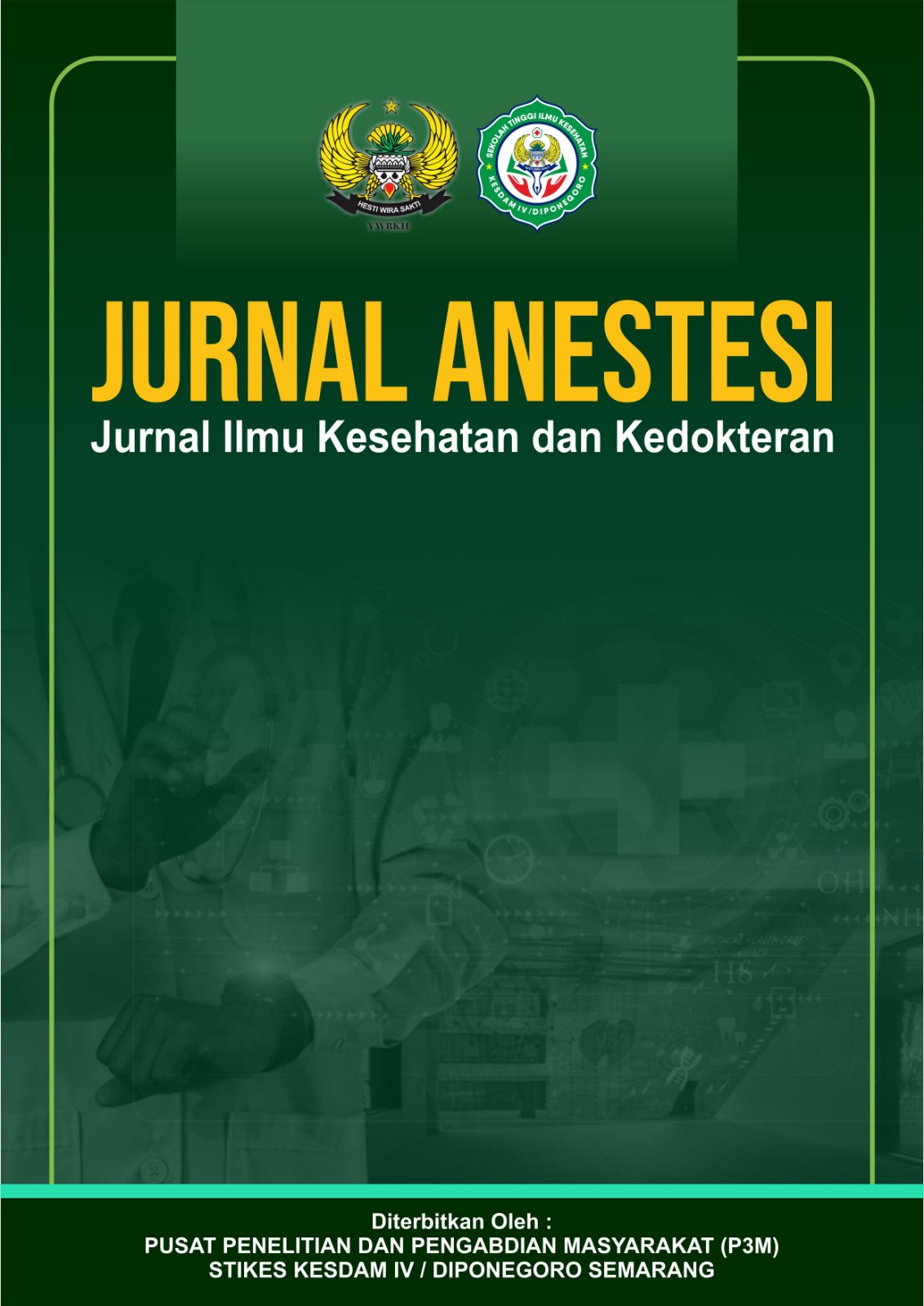Hubungan Antara Indeks Massa Tubuh (IMT) dengan Lama Rawat Inap
Studi terhadap Pasien SNH di Rumah Sakit Islam Sultan Agung Semarang
DOI:
https://doi.org/10.59680/anestesi.v3i2.1773Keywords:
BMI, Comorbidities, Length of Hospitalization, SNHAbstract
Stroke is the second leading cause of death after heart disease. This condition is thought to be related to risk factors such as hypertension, diabetes mellitus, smoking, and lack of physical activity. The existence of these risk factors can affect a person's BMI (Body Mass Index). This study aims to determine the relationship between BMI status and the length of hospitalization of SNH patients at Sultan Agung Islamic Hospital, Semarang. This study uses analytical observational research and cohort research design. Data collection was carried out prospectively through the measurement of LLA and knee height in SNH patients as well as patient medical record data. The medical record data taken is the length of hospitalization of SNH patients obtained from the date of admission to the date of discharge from the hospital. The number of samples studied was 65 patients using the non-probability sampling method with consecutive sampling that had met the inclusion and exclusion criteria. The research was conducted at Sultan Agung Islamic Hospital Semarang from October 2024 - January 2024. The results of bivariate data analysis using the contingency coefficient statistical test obtained a significance value of P=0.047 (P<0.05) so that it can be concluded that there is a significant relationship between BMI status and the length of hospitalization of SNH patients at Sultan Agung Islamic Hospital, Semarang. The level of closeness of the relationship with the contingency coefficient test in this study was obtained r = 0.239 (0.20-0.399) so it is said that the closeness of the relationship is weak. It can be concluded that there is a significant relationship between BMI and length of stay in SNH patients at Sultan Agung Islamic Hospital Semarang. The length of hospitalization in SNH patients is also influenced by the severity of comorbidities, so that SNH patients with a high level of comorbidity severity have a longer length of hospitalization.
References
Ainiyah, N., & Nurjanah, S. (2017). Internal factors affecting length of stay stroke patient in hospital.
Akyea, R. K., Doehner, W., Iyen, B., Weng, S. F., Qureshi, N., & Ntaios, G. (2021). Obesity and long-term outcomes after incident stroke: A prospective population-based cohort study. Journal of Cachexia, Sarcopenia and Muscle, 12(6), 2111–2121. https://doi.org/10.1002/jcsm.12778
Amirsyah, M., Amirsyah, M., Ikhlas, M., Putra, A., Bedah, S., & Rekonstruksi, P. (2020). Tinjauan pustaka ulkus dekubitus pada penderita stroke. Jurnal Kes Cehadum, 2(3).
Anindita, T., & Wiratman, W. (2017). Buku ajar neurologi.
Antonopoulos, A. S., & Tousoulis, D. (2017). The molecular mechanisms of obesity paradox. Cardiovascular Research, 113, 1074–1086. https://doi.org/10.1093/cvr/cvx084
Bintanah, S., Kusuma, H. S., Setiawati, Y. N., & Mulyati, T. (2018). Perhitungan kebutuhan gizi individu.
Bodiuzzaman, M., Rahman, A., Hossain, M. A., Islam, T. T., Islam, M. S., & Morshed, M. M. (2021). Common comorbidities among stroke patient and their outcome in a tertiary care hospital, Bangladesh. Bangladesh Journal of Medicine, 33(1), 8–11. https://doi.org/10.3329/bjm.v33i1.56420
















